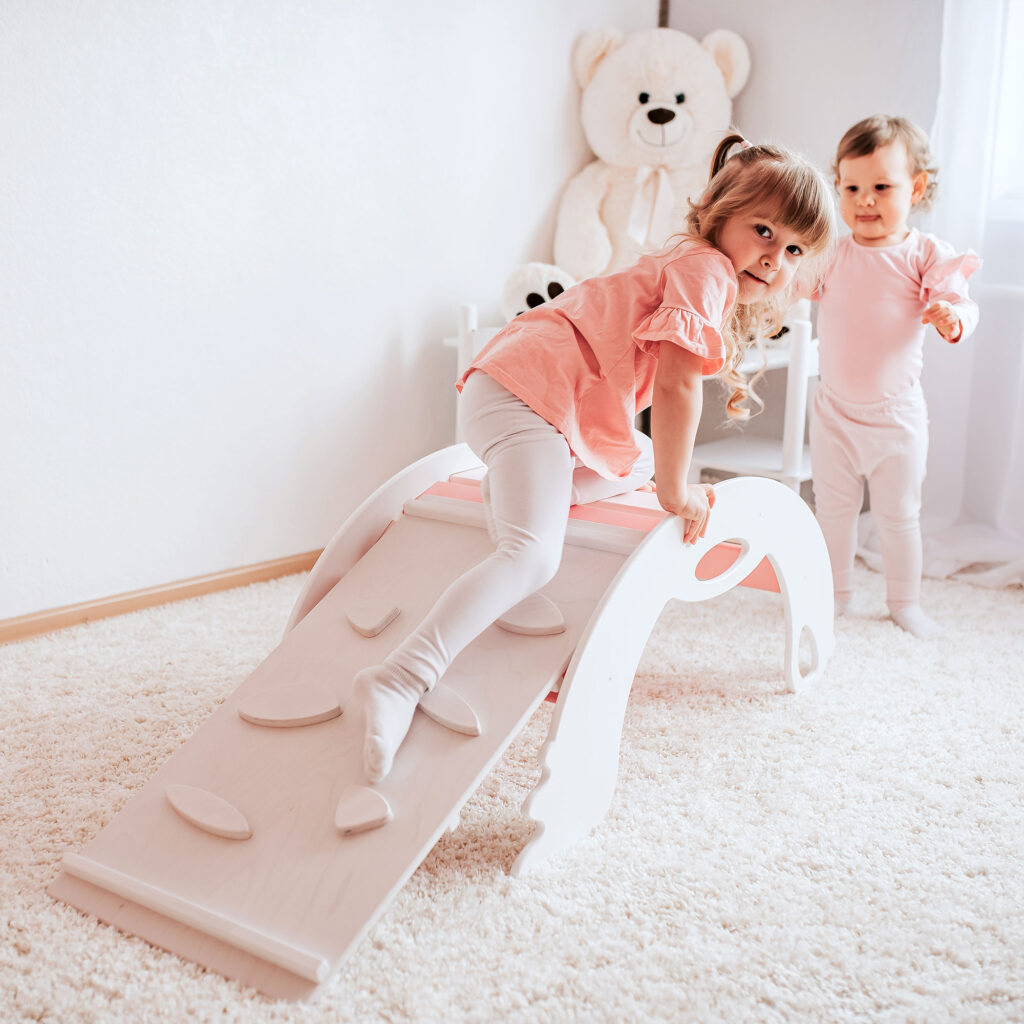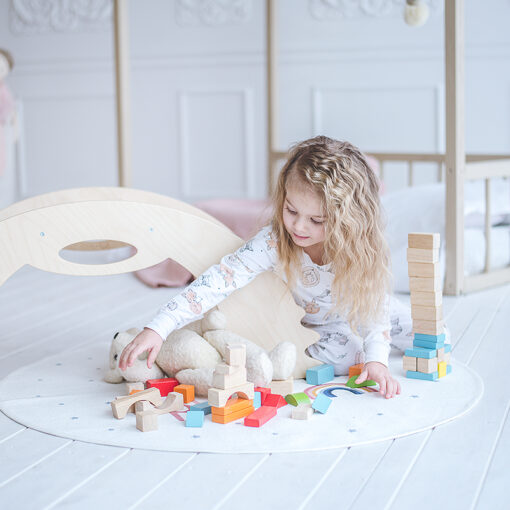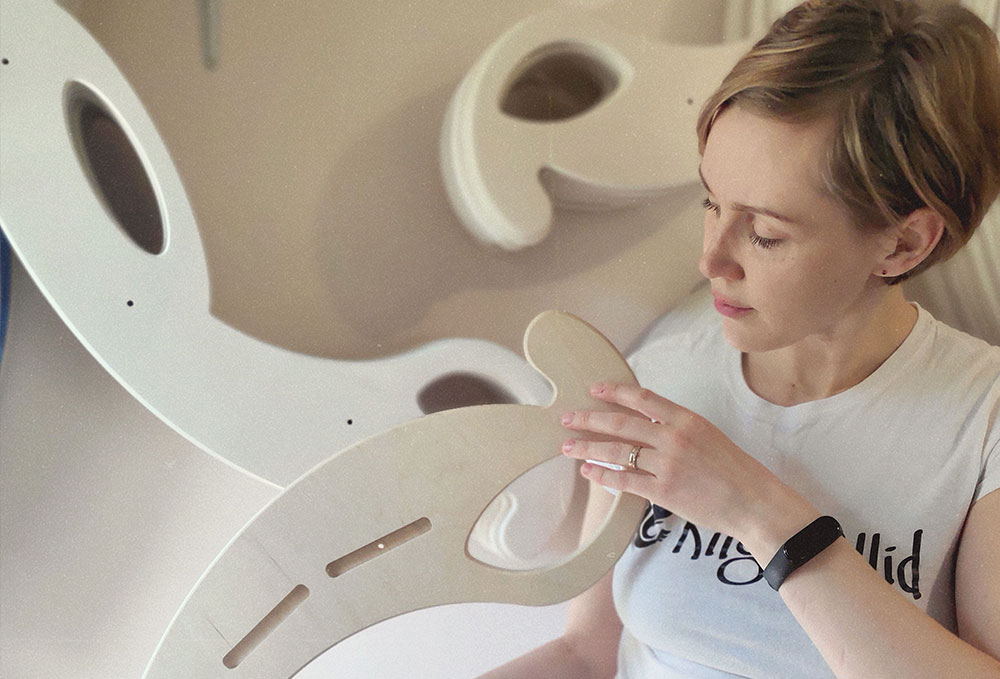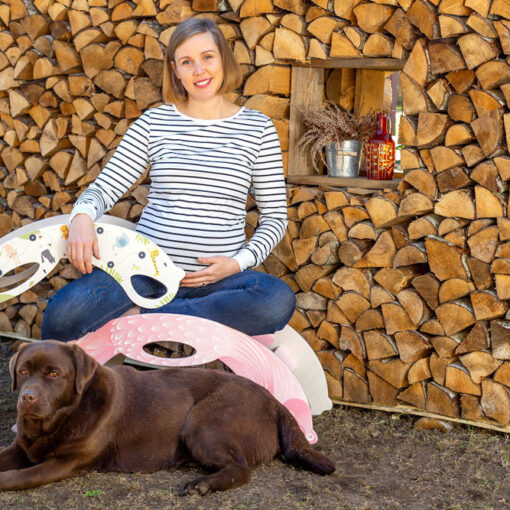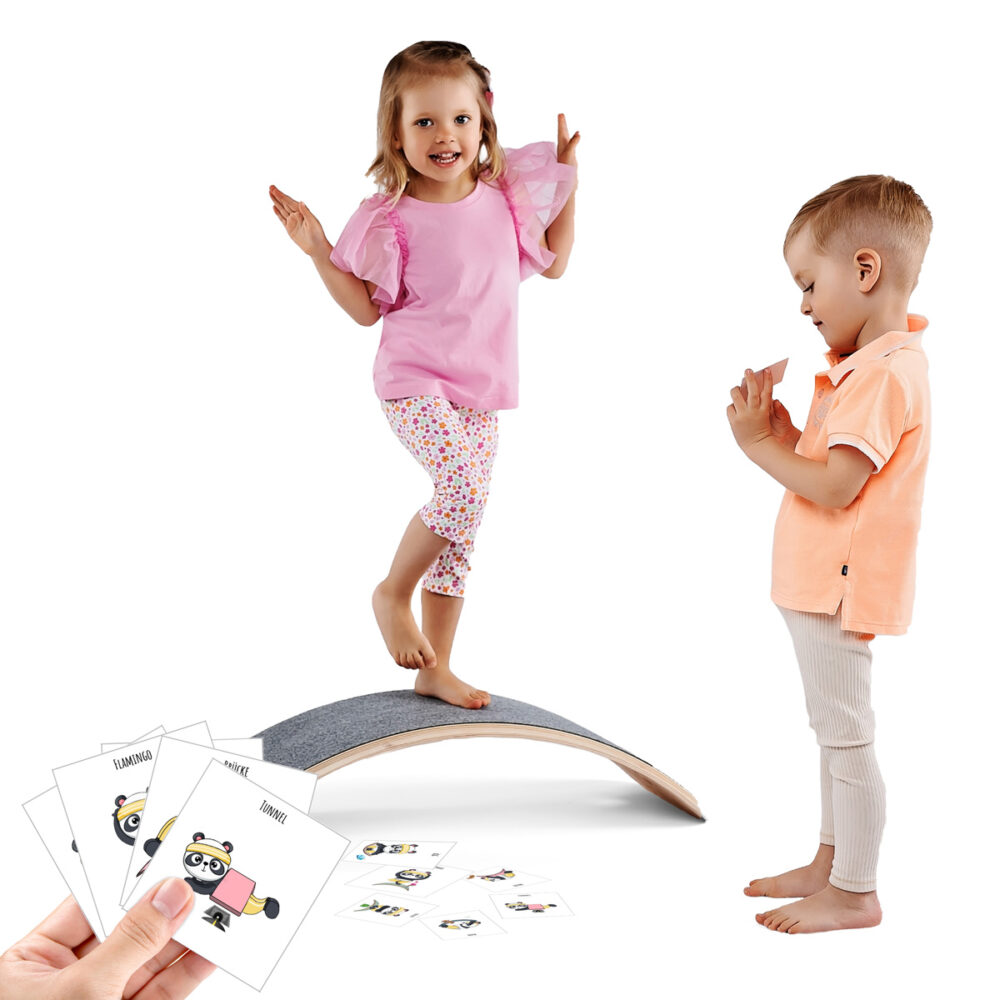A curious, exuberant child will play with anything – from rocks found in the park to tablets and plastic toys. However, there are only a few toys designed to truly support your child’s development.
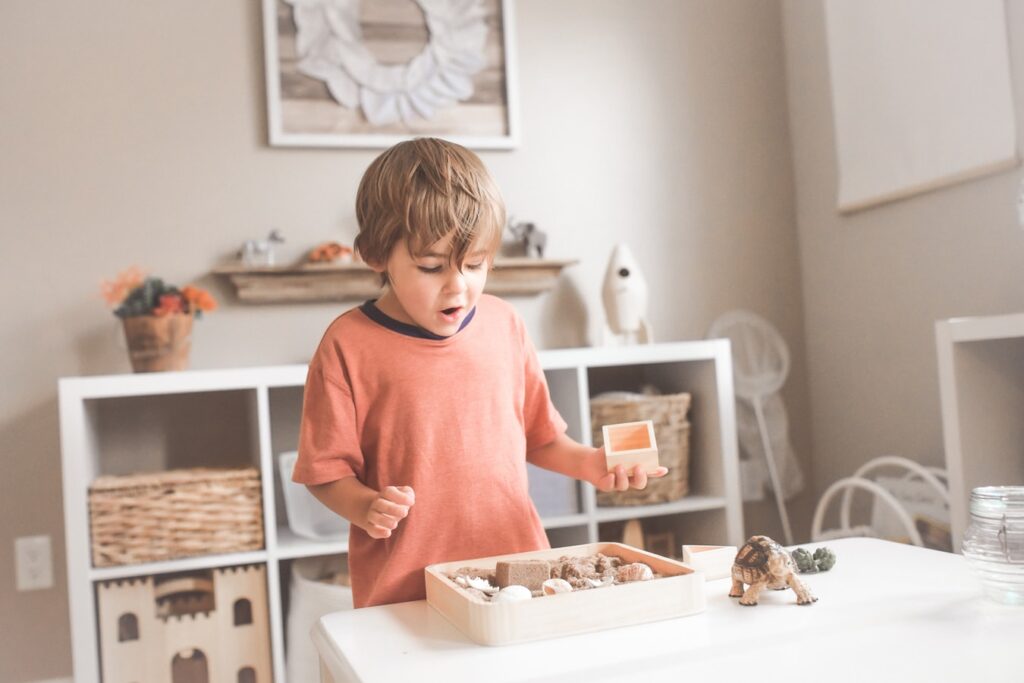

You are probably familiar with the Montessori method, a trending learning philosophy developed by the Italian physician Maria Montessori. It follows a simple principle: children should be encouraged to learn independently and inspired to nourish their inner explorer, rather than being guided by an adult every step of the way. This method has been proven to boost cognition, problem-solving, imagination, confidence, fine motor skills, social and emotional intelligence.
What are Montessori toys?
Montessori toys are tools that fall in line with the Montessori philosophy, engaging all the senses and inspiring children to learn to play by using their intelligence, intuition, and imagination. We will use the term “toys” for the sake of ease, but it’s important to note that Maria Montessori called them “materials” or “manipulatives.”
The main characteristics of Montessori toys include:
- Purpose. Montessori toys don’t exclusively serve for entertainment but are designed to teach your child the essential skills of a well-rounded adult.
- Natural materials. Maria Montessori favored toys made of wood as they are safe, inspirational, and durable. A wooden toy can capture a child’s attention without overwhelming them with multiple stimuli.
- Simplicity. Maria Montessori believed that a simple toy allows your child to focus better instead of causing a sensory overload that may obstruct the learning experience.
- Realism. Montessori books and toys intend to teach the child about the world around them by preparing them for real-life situations and developing skills like coordination, courtesy, self-awareness, independence, concentration, and accountability.
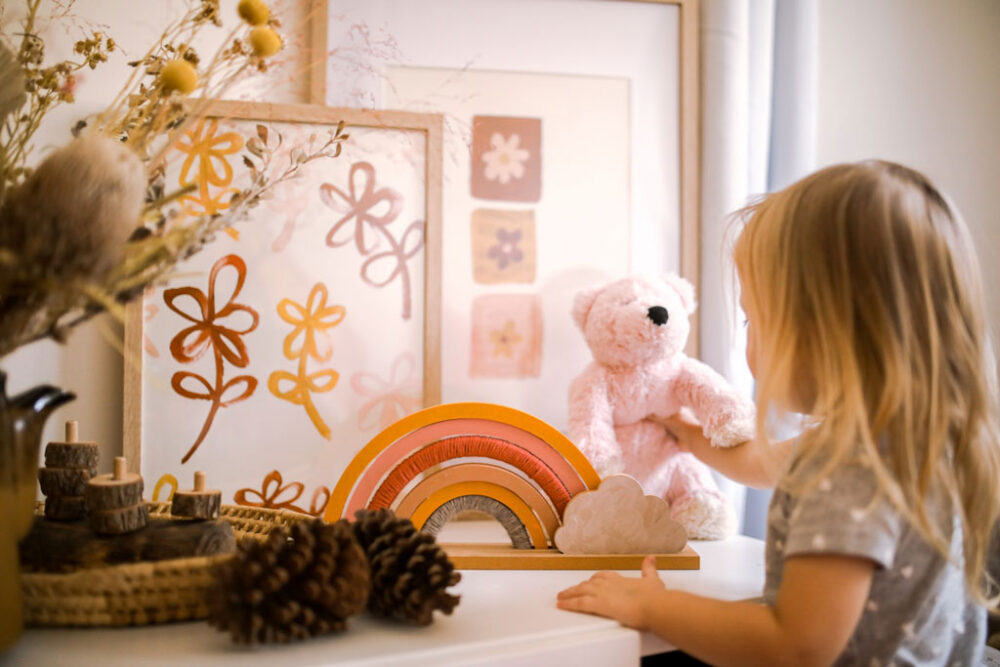

Why are Montessori toys better than traditional toys?
The toy market is saturated with battery-powered learning toys that are full of flashing lights, gadgets, bright colors, and sounds. They offer instant gratification, but they eliminate opportunities for imaginative play and problem-solving.
Montessori toys aim to teach your kids accessible skills and information about the world around them. For example, a flashy toy may teach your two-year-old to spell certain words, but babies don’t attach meaning to letters before the age of three. At the same time, your two-year-old child may learn to count to ten, but they will not understand the concept of numbers until the age of four.
At the same time, a simple toy can support cognitive milestones better. For example, around the age of 9 months, children start to understand cause-effect better. A wooden toy eliminates distractions and captures the essence of this concept through easily observable consequences, allowing your child to explore the world at their own pace.
Moreover, wooden toys following the Montessori principles are perfect for stimulating the imagination. From simple toy trucks to complex rocketships, solid wooden blocks can be pressed into duty as the driving force behind all sorts of play. Without too many bells or whistles, the humble wooden blocks have the potential to become anything. Over time, they’ll gain character and tell you something about how the child views their world and what they’re interested in most.
Montessori toys can be multifunctional in more than one way
A 2018 study showed that babies and toddlers are happier when playing with fewer toys, as too many options can become overwhelming. Montessori and Waldorf homes and classrooms have a minimalist approach, featuring fewer versatile, open-ended, and challenging toys.
Moreover, another research indicates that natural materials like wood are calming and help children focus better. Touching wood may have a positive neurological impact, inducing physiological relaxation.
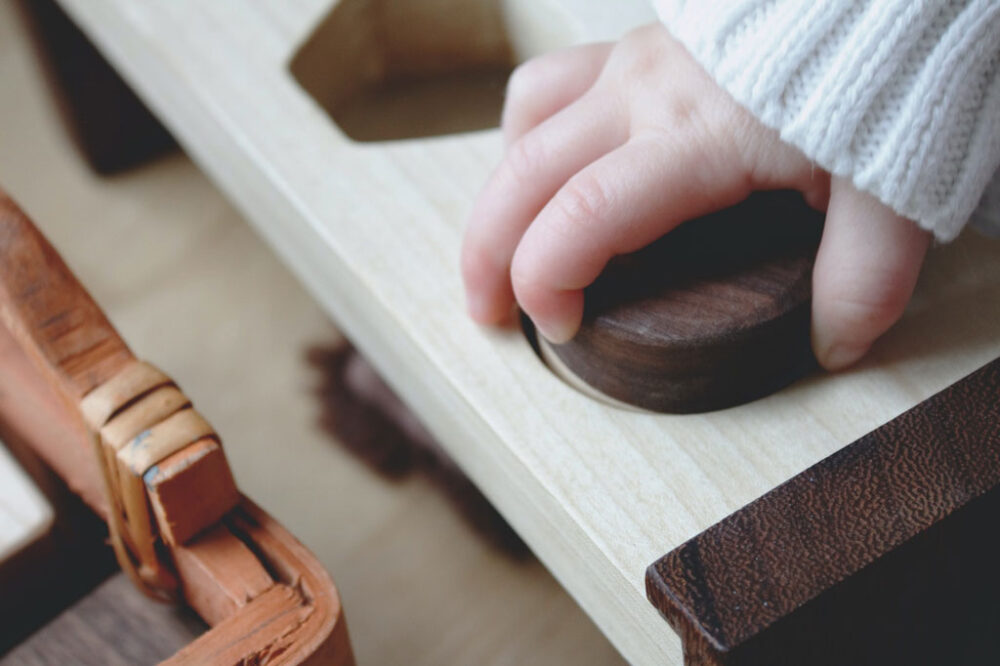

Montessori toys are safer and more durable
Many Montessori fans are against plastic toys because of BPA and lead, which are harmful toxins that are found in plastic toys. Recently, around 253,000 Pixar Sarge die-cast toy cars and 1,5 million Fisher-Price preschool toys with lead paint were recalled, as lead poses real threats to children’s health.
Toxic chemicals are not the only concern. Lots of toys include batteries and tiny elements that could be ingested by children – while robust wooden toys don’t. It goes without saying that Montessori wooden toys are the winners in the safety department.
Montessori toys are kind to the environment
The creator of the Montessori method was deeply preoccupied with the environment. Compared to their plastic counterparts (that usually end up in a landfill shortly after the purchase), wooden toys are more durable and leave a much smaller carbon footprint. The goal of the Montessori method is not only to support the child’s mental and physical development but also to teach them core values – and being eco-conscious is on the list.
The bottom line
Following the Montessori method is an excellent idea if you intend to raise an intelligent, creative, independent, and self-aware child. By playing with Montessori toys, your child will have fun while developing healthy behavioral patterns that will translate into healthy habits later in life.
At Nobsi, our mission is to provide you with high-quality, multifunctional, eco-friendly wooden toys designed in relation to Montessori’s principles. Check out our handmade toys here.
